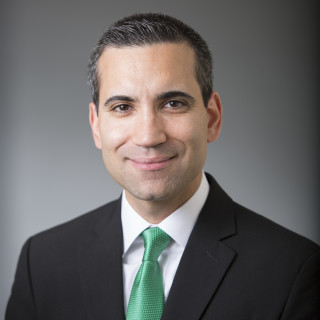
Each year at the Annual Meeting of the Society of Thoracic Surgeons (STS), the J. Maxwell Chamberlain papers highlight the meeting’s highest rated papers. For the 2019 Annual Meeting, which took place between January 27–29th at the San Diego Convention Center, two Chamberlain papers featured findings using large registry data with important health policy implications both in cardiac and thoracic surgery.
The first Chamberlain paper, presented by Dr. Sameer Hirji from the Brigham and Women’s Hospital, was entitled: “Relationship Between Hospital Surgical Aortic Valve Replacement Volume and Transcatheter Aortic Valve Replacement Outcomes.” Using Medicare claims data from more than 200,000 beneficiaries, the authors sought to assess how hospital volume of surgical aortic valve replacement (SAVR) correlated with transcatheter aortic valve replacement (TAVR) outcomes. The study is particularly timely as TAVR continues to demonstrate strong growth in the U.S., but questions remain on appropriate TAVR volumes for national coverage determination by the Centers for Medicare and Medicaid Services. Across 1,208 hospitals in the US, the authors reported that most commonly TAVR was performed at hospitals with 100–199 annual SAVR cases (35 percent) or 200–299 annual SAVR cases (23 percent), yet three percent of TAVR cases were still performed at centers with <50 SAVR cases per year. The remaining distribution of TAVR cases in the series occurred at centers with 50-99 annual SAVRs (20 percent) and >300 annual SAVRs (19 percent). The lowest 30-day morality (5.8 percent) was observed in the >300 annual SAVR group. Even after risk adjustment, total hospital volume of SAVR remained an independent predictor of 30-day and one-year TAVR outcomes. The data from this large administrative registry highlights the importance of maintaining an active SAVR volume in TAVR programs. However, as the indications for TAVR continue to broaden to lower risk populations; lower volume programs may struggle to maintain SAVR volumes. Resultantly, creating minimum SAVR thresholds for national coverage determination may become complex. As with many volume-outcomes analyses, the etiology for the volume-outcomes relationship remains unclear. Are higher SAVR volume programs better at risk stratifying patients to the most appropriate treatment, or are higher volume programs better from a technical intra- and post-procedural management perspective? While the thresholds used for national coverage determination remain in question, one aspect of transcatheter valve programs remains clear. Namely, that heart teams, which provide comprehensive evaluation of both surgical and transcatheter options for structural heart disease, remain critical in the management of patients with complex valve disease.
The second Chamberlain paper, presented by Dr. Sora Ely from the University of California San Francisco, was entitled: “Thoracic Surgery Regionalization within an Integrated Health Care System Improves Outcomes from Major Pulmonary Resections for Lung Cancer.” Utilizing data from the Kaiser Permanente managed care network over a course of six years, the authors sought to assess how thoracic surgery regionalization influences outcomes for major pulmonary resections. During the second half of the study period, there was regionalization of thoracic surgical care from 16 hospitals to five designated Centers of Excellence. As expected, such regionalization increased average facility volume, but importantly also increased the frequency of video-assisted thorascopic surgery (VATS) utilization as well overall hospital and ICU length of stay. In addition, there was a reduction in the frequency of post-operative complications after regionalization. The observed effects of regionalization on decreased length of stay and complication rates remained after risk adjustment. For their analysis, the authors concluded that for major lung cancer resections, regionalization appeared to result in higher utilization of a VATS approach as well as shorter hospitals stays and reduced complications.
The two Chamberlain papers in adult cardiac and thoracic surgery at STS 2019 highlight the important role large registry data may play in health care policy. Historically, databases have been viewed as tools to track and improve outcomes on an individual or center level. However, as access to and experience with large registry data continues to grow we now see growing research on how data may inform public policy. While big data is powerful by virtue of the ability to analyze large number of patients, there are always significant limitations to administrative data. In the setting of volume-outcomes analyses, databases rarely provide information on what specific features of high volume centers are responsible for improved outcomes or causes of death. Similarly, for regionalization analyses, databases lack information on how consolidation of care improves outcomes, if such outcomes are sustained over time, and how regionalization affects access to care for patients. Registries will continue to provide valuable clinical data that may help inform public policy on how health care is best delivered, but we must always understand the need to critically review registry outcomes and seek data on longitudinal outcomes of health policy interventions and their influence on health care delivery.
Alexander Iribarne, MD, MS (@DrIribarne) is an assistant professor of surgery at Dartmouth Hitchcock Medical Center and assistant professor at The Dartmouth Institute for Health Policy and Clinical Practice, Lebanon, NH, USA.







